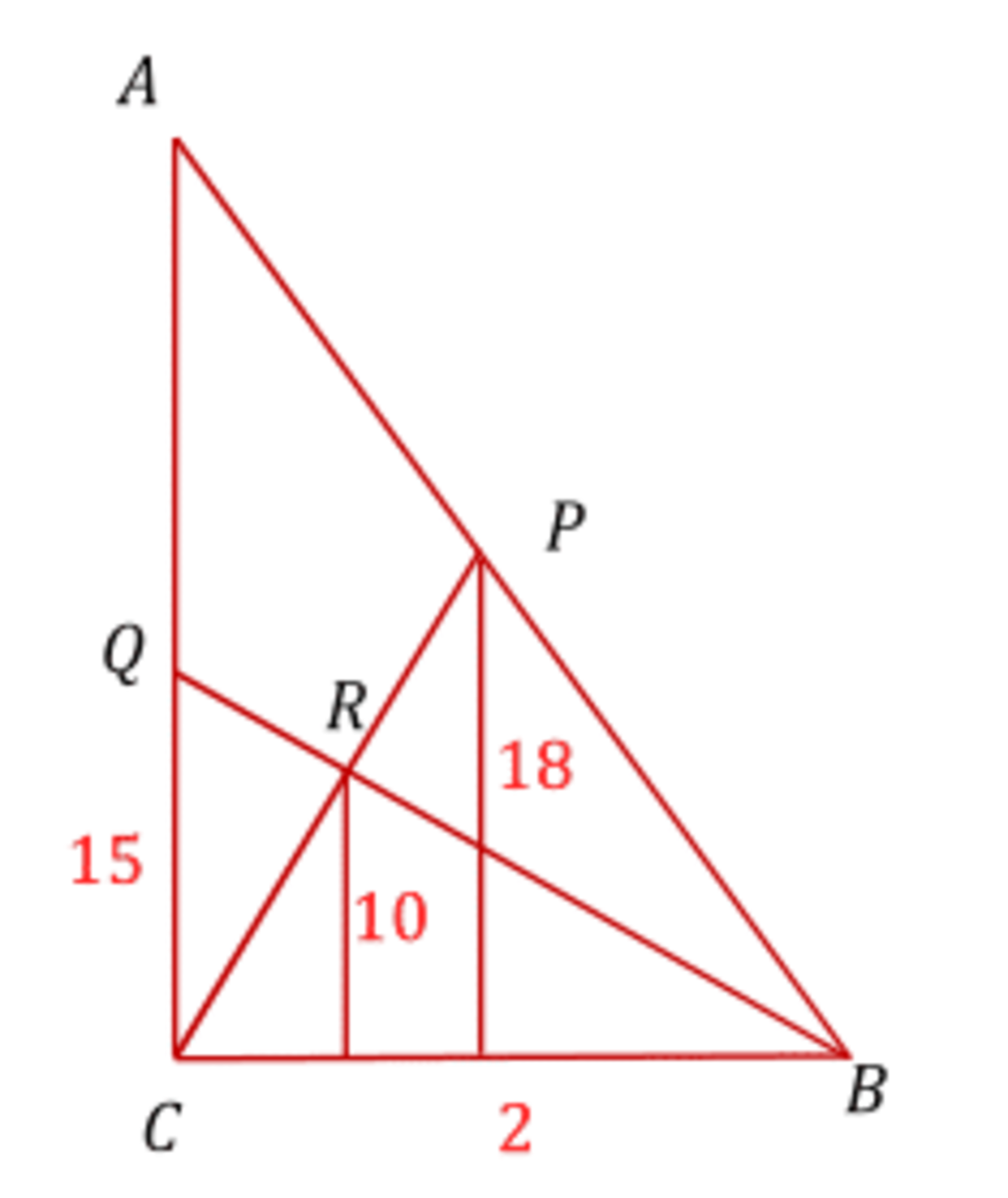Geometry
In a triangle A B C , from B and C , B Q and C P are drawn to meet A C and A B . area ( B C R ) = 1 0 sq.units , area ( B P R ) = 8 and area ( C Q R ) = 5 . Find area ( A P R Q ) .
This section requires Javascript.
You are seeing this because something didn't load right. We suggest you, (a) try
refreshing the page, (b) enabling javascript if it is disabled on your browser and,
finally, (c)
loading the
non-javascript version of this page
. We're sorry about the hassle.
2 solutions
 The areas of triangles are as follows:
[
C
B
R
]
=
1
0
,
[
C
B
Q
]
=
1
0
+
5
=
1
5
,
[
C
B
P
]
=
1
0
+
8
=
1
8
The areas of triangles are as follows:
[
C
B
R
]
=
1
0
,
[
C
B
Q
]
=
1
0
+
5
=
1
5
,
[
C
B
P
]
=
1
0
+
8
=
1
8
Since the breakdown into base and height is not given, we can use whatever is convenient. I have chosen to make the common base 2 , so that the heights of the triangles are simply equal to their areas.
Likewise it does not matter where the heights are located, so I have chosen ∠ A C B = 9 0 ∘ and placed the origin of my coordinate system at C
Equation of the line through Q B is y = 1 5 − 2 1 5 x
Point R is located on this line at y = 1 0 , so the coordinates of the point are R = ( 3 2 , 1 0 )
Line C P goes through point R and has the form y = k x . It is therefore given by equation y = 1 5 x
The point P is located on this line where y = 1 8 and has coordinates P = ( 5 6 , 1 8 )
Line A B has the format y = b − 2 b x and goes through point P , so it is y = 4 5 − 2 4 5 x
The y -intercept of this line is b = 4 5 so the area of the triangle A B C is [ A B C ] = 4 5
The area of the quadrilateral [ A Q R P ] = 4 5 − 1 0 − 5 − 8 = 2 2
b + 8 a = 1 0 5 ( 1 )
a + 5 b = 1 0 8 ( 2 )
From ( 1 ) ,
a = 1 0 5 b + 4 0 ( 3 )
Substitute ( 3 ) in ( 2 ) , we have
1 0 5 b + 4 0 + 5 b = 1 0 8
1 0 5 b + 4 0 + 5 0 b = 1 0 8
1 b ( 5 b + 9 0 1 0 ) = 1 0 8
5 b + 9 0 1 0 b = 1 0 8
1 0 0 b = 4 0 b + 7 2 0
6 0 b = 7 2 0
b = 1 2
It follows that,
a = 1 0 5 ( 1 2 ) + 4 0 = 1 0 1 0 0 = 1 0
Finally,
a + b = 1 0 + 1 2 = 2 2